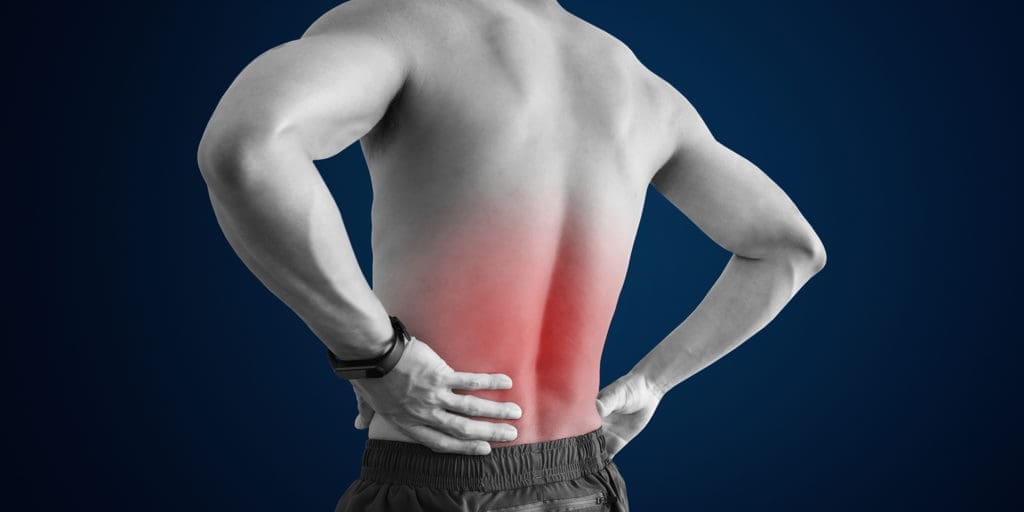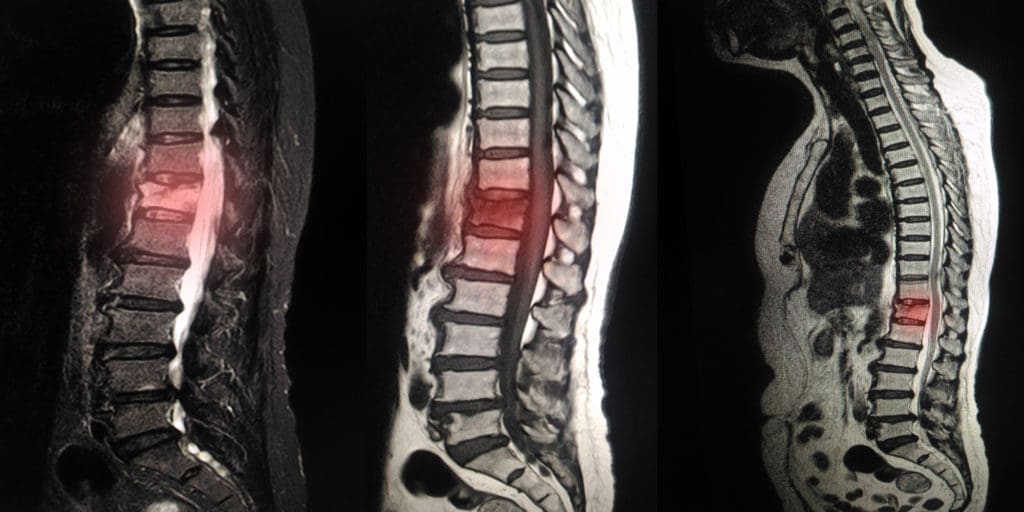There are several different types of chronic back pain, the two most common being musculoskeletal or disc related. Understanding the difference between the two can help speed up the recovery process and target the appropriate plan of care. Is your issue muscle or disc back pain? Let’s find out.
How Common is Back Pain?
For millions of people around the globe, back pain is an all too common occurrence. Studies have shown that up to 80% of the population will experience some form of back pain at some point in their life. Back pain also tops the chart for the most common causes of work-related injuries and, as a result, is the second highest cause for missed workdays. One study conducted by the Bone and Joint Initiative found that back pain accounted for more than 264 million lost workdays in 2018 alone—or two workdays for every full-time worker in the United States.
Back pain can occur at any age from adolescence to the elderly, but occurs more frequently in adults between the ages of 30-50, according to the National Institute of Neurological Disorders and Stroke. While a small percentage of back pain can be attributed to serious conditions such as inflammatory arthritis, almost all cases are what are known as ‘mechanical’ or ‘non-organic, meaning they are not caused by a specific condition, infection, fracture, or cancer.
The single most common cause of back pain is torn or pulled muscles or ligaments, most often associated with injuries or repetitive movements. Non-organic back pain is often the result of abnormal stress and strain on the muscles of the back. These types of injuries are a common result of repetitive bad habits such as poor posture or incorrect lifting or bending movements.
While most back pains are singular occurrences, recurrence can be a common incident; and for a small percentage, back pain can become chronic. While both musculoskeletal and disc-related pain is serious, understanding the difference between the two can help pinpoint the best course of action when treating acute or chronic back pain.
Differences Between Muscle and Disc Pain
Back pain can be caused by several different instances, often resulting in pain associated with either the muscles or ligaments of the vertebral column or the discs that separate the bones of the spine (vertebrae). Muscle and ligament injuries are more common than slipped or herniated discs, and are more commonly the cause of acute aches and pains; while disc pains are more likely to become chronic.
Both muscle and disc-related back pain can result in serious, sometimes debilitating pain, that can take weeks or even months to recover from. While the two can be difficult to tell apart, muscle and disc pain can be caused by very different circumstances; often requiring vastly different treatments.
Muscle-related Back Pain
 Muscle strains are an injury that occurs within the muscle tissue or the tendons that attach muscle to bone. The muscles or ligaments can be overstretched, pulled, or torn. This type of back injury is typically caused by either overexertion or abnormal pressure placed on the back muscles. Strains can typically be sustained from sports injuries, incorrect or prolonged heavy lifting, or bending or twisting irregularly.
Muscle strains are an injury that occurs within the muscle tissue or the tendons that attach muscle to bone. The muscles or ligaments can be overstretched, pulled, or torn. This type of back injury is typically caused by either overexertion or abnormal pressure placed on the back muscles. Strains can typically be sustained from sports injuries, incorrect or prolonged heavy lifting, or bending or twisting irregularly.
Back pain that is caused by musculoskeletal injuries can sometimes result in tightness or spasms of the affected area and can be recurring or acute. Symptoms of muscle or ligament strain can closely resemble that of disc injuries, but will be more localized and will often remain in specific areas of the back. Some common symptoms of muscular pulls or tears can include:
- Pain when moving the back, which subsides or lessens when remaining still
- Cramping, tightness, or spasms in the back
- Difficulty straightening the back
- Pain in the back that radiates or moves to the buttocks or hips, but does not travel down the legs
Disc-related Back Pain


When this type of injury happens, the natural cushion between the spine’s vertebrae swells, causing the disc to expand or ‘slip’ into places where nerves usually reside. As a result, nerves can become compressed, causing discomfort, severe pain, and numbness in the affected area.
Since this type of pain typically involves the nerves, it can oftentimes present with symptoms that feel very different from muscle or ligament strains. Pain associated with herniated or slipped discs will typically radiate to other parts of the body, most commonly down the legs and into the feet, and up into the neck and arms. Some of the most common symptoms and signs of herniated discs often involve pains associated with nerves, and can include the following:
- Leg or foot pain that radiates from the back. For cases of herniated discs higher up in the spine, neck and arm pains can be more common.
- Pain when coughing or sneezing
- Numbness or tingling
- Aching or burning sensation in the affected area
- Unexplained muscle weakness
How to Treat Back Pain


Typically, pain caused by muscular strains and pulls can be alleviated with over-the-counter pain medications such as ibuprofen and acetaminophen, as they can both help with inflammation and pain. For more serious cases of musculoskeletal injuries, physical therapy can be a viable option for pain management.
Disc injuries can require more targeted care, as the identification and diagnosis of a disc injury can only be confirmed through scans such as a CT or MRI, and will typically range depending on the severity of the disc and how far it has ‘slipped’. For more mild cases, physical therapy is typically recommended. Exercises are focused on strengthening and stretching the back, which can help reduce pain while taking pressure off of the affected disc.
For more severe cases of disc injuries, surgery may be prescribed by a doctor or physical therapist. Since disc injuries can cause permanent nerve damage, surgery will often be advised if symptoms don’t subside after six weeks of physical therapy. Procedures such as a microdiscectomy can remove the damaged or protruding part of the disc, which can help reduce pain.
What Questions About Back Pain Do You Have?
Ask away in the comments section below!
What topics should we cover next?
Email us at info@painresource.com with your ideas.
Are you on Facebook?




